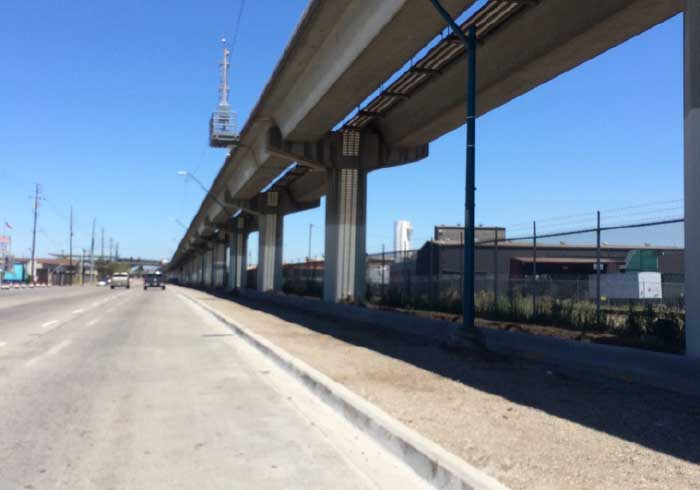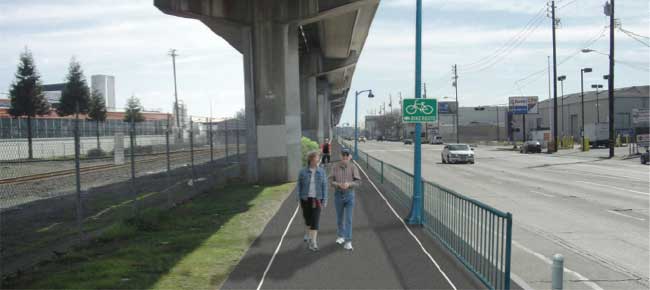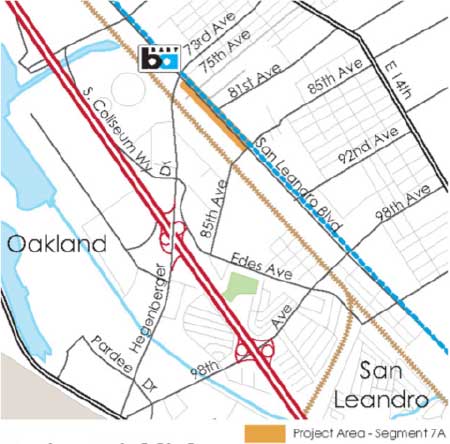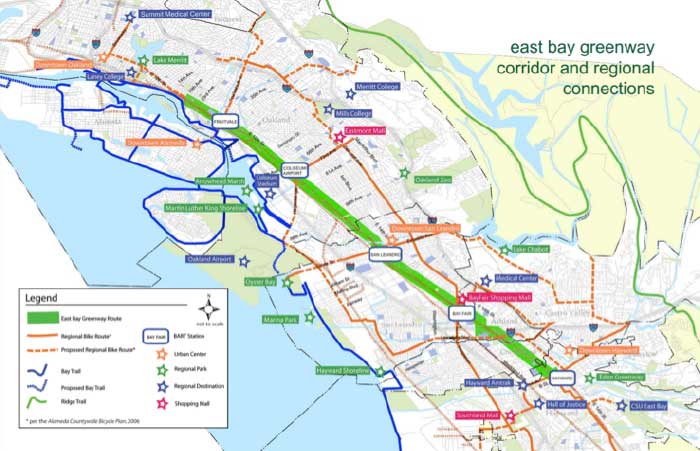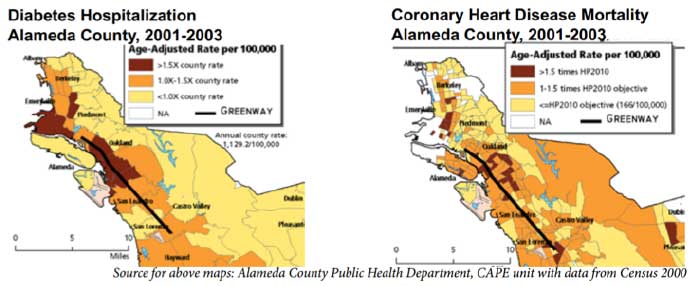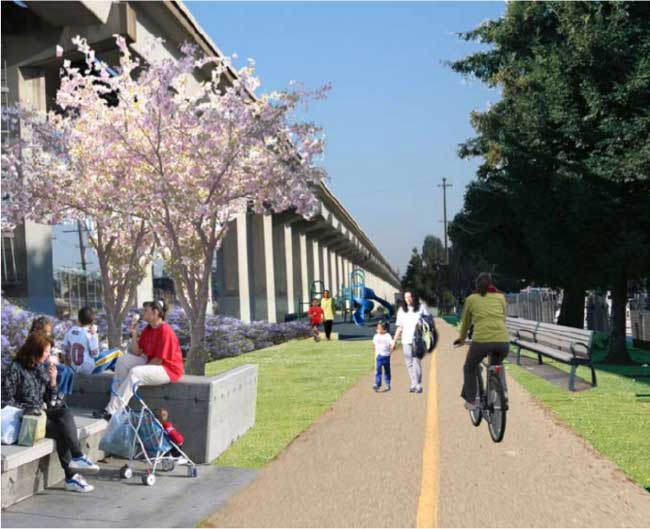Construction on the much-anticipated first segment of the East Bay Greenway has stalled due to delays from unexpected levels of soil contamination. The 0.5 mile, $3.56 million project was expected to open this summer, but will now be delayed until the end of the year, according to a Memorandum from the Alameda County Transportation Commission (ACTC) [PDF]. $300,000 in additional costs are anticipated for soil removal and disposal.
Meanwhile, funding for the full project has not yet materialized. The Greenway would have received funding from the 2012 Alameda County transportaiton sales tax measure, but the measure “lost” with 66.52 percent of the vote. However, the funding outlook is improving: another county ballot measure will likely follow in November 2014, while Cap & Trade funds offer a new source for active transportation projects.
Despite the possibly higher pricetag, few projects rival the East Bay Greenway in terms of breadth of project benefits. The Greenway will improve access to BART – promoting transit ridership, reducing driving, and alleviating parking constraints at stations. It will expand active transportation options for trips related to work, school, errands and recreation, thereby improving sustainability, mobility, and public health. It will enhance community safety by activating vacant spaces currently used for illegal dumping and perhaps even illicit activities. And it will promote economic development, following examples of trail-oriented development nationwide.
The initial 0.5 mile segment might not seem like a big deal, but it’s the first step toward implementing one of the Bay Area’s largest active transportation projects. We’ll check in on the project later this year as its opening approaches.

